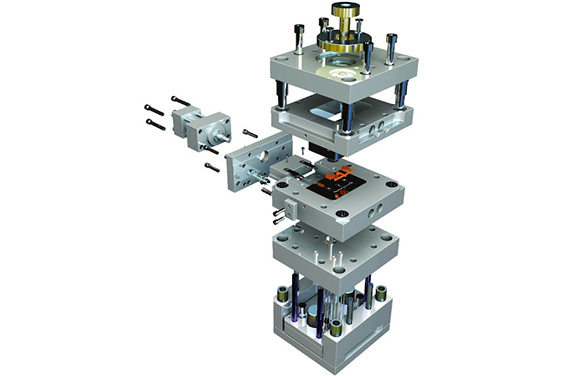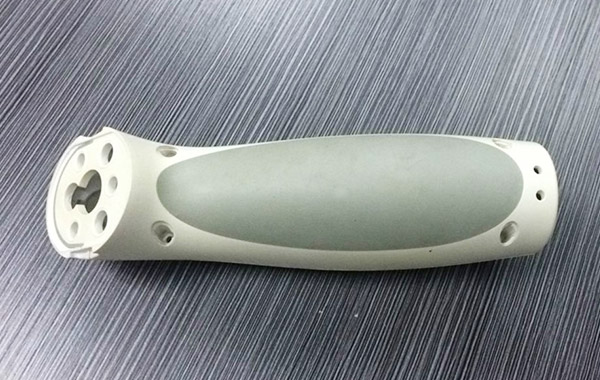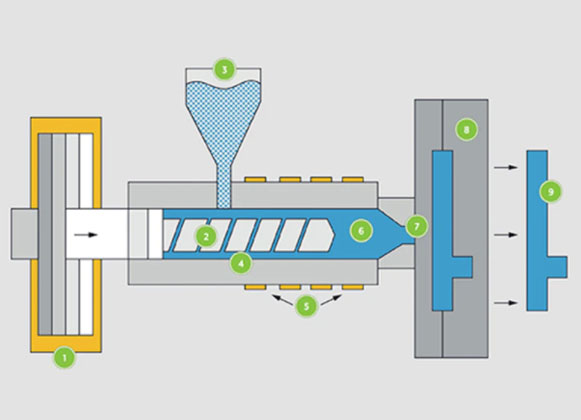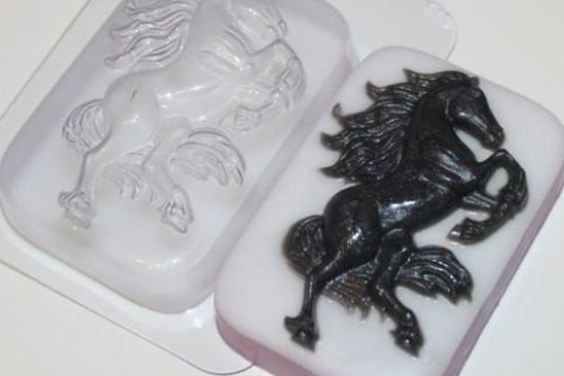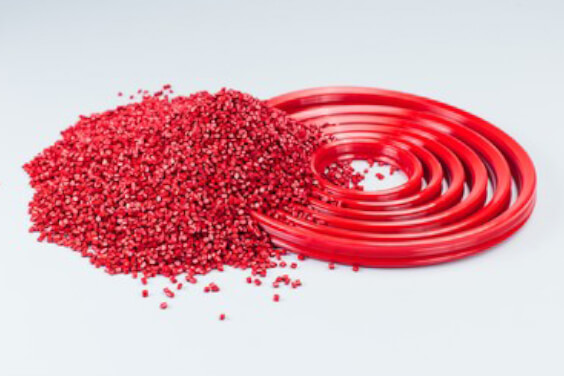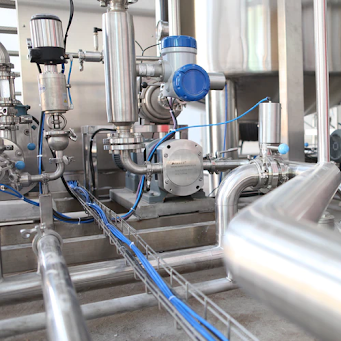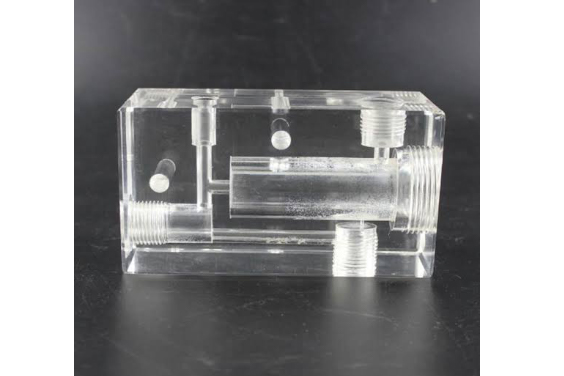Source:https://www.pinterest.com/pin/638244578418682609/.
Designing plastic pieces is a challenging task that requires consideration of a variety of factors in order to match the app’s requirements. What will the element’s function be? What is its relationship to the other elements in the convention? When it’s in usage, what sorts of pressures will it be susceptible to? Production considerations, in combination with functional and structural constraints, have a big impact on the design of an injection-molded plastic part.
How the molten plastic permeates, fills, and cools within the cavity to make the part determines the geometry of the constituents in the part.
As a result, we’ll go through the essential features of injection mold tooling that you should be aware of. Continue reading!
What is Mold Made of?
Source:https://www.pinterest.com/pin/35465915804052383/.
Hardened or pre-hardened steel, aluminium, and/or beryllium-copper alloy are commonly used to make plastic injection molds. Steel molds are more expensive, however, they are generally favoured due to their long endurance. Hardened steel molds are preferable in terms of wear endurance and longevity because they are heat-treated after machining.
Numerous steel molds are built to handle millions of pieces over the course of their lives. Pre-hardened steel molds are a less wear-resistant and quite cost-efficient solution for lower volume production.
Aluminium molds, on the other hand, can be significantly less expensive, but they are often unsuitable for massive yields or products with tight dimensional forbearances. When planned and produced utilizing computer numerical control machines or Electrical Discharge Machining techniques, however, aluminium molds may create tens of many pieces at a low cost.
In sections of the mold that require immediate heat evacuation, copper alloy inserts are occasionally employed. This can shorten the cycle time while also improving the part’s visual quality.
How Are Plastic Injection Molds Made?
Source:https://www.pinterest.com/pin/362469470020450808/.
Molds are made in two ways: conventional machining and electrical discharge machining.
Conventional(CNC) machining
Source:https://www.pinterest.com/pin/155303887348359022//.
Conventional machining, in its most basic form, necessitates the use of lathes, milling machines, and drill presses by hand. CNC machining has become the most common method of manufacturing more complicated and precise molds while still employing traditional machining procedures, thanks to advances in technology. Computers manage the mobility and functioning of mills, lathes, and other cutting equipment with CNC.
Mold design and production operations are both highly automated in modern CNC systems. Computer-aided design software is used to specify the mold’s mechanical specifications, which are subsequently converted into production instructions by computer-aided manufacturing software. After that, “post processor” software converts these guidelines into the exact commands required by each machine used to make the mold. The commands that arise are then fed into the CNC machine.
Electrical Discharge Machining(EDM)
Source:https://www.pinterest.com/pin/570972058979573275/.
In the mold-making industry, electrical discharge machining (EDM) has grown very popular. EDM is a procedure in which a targeted form is achieved by using a graphite or copper electrode. It’s then put in an EDM machine and placed above a dielectric fluid-submerged workpiece.
After that, the electrode is dropped to the workpiece. The electrode is then utilized to dismantle and distribute the metal in the area opposing the electrode using a regulated electrical source. The electrode does not touch the workpiece. Between the electrode and the workpiece, a spark gap of a few inches is always kept. This way of obtaining metal from a mold is slower, but it can yield geometries that are impossible to achieve with normal CNC machining.
Another benefit of the EDM method is that it can shape pre-hardened molds without the necessity for extra heat treatment. The resulting fine EDM finish can sometimes be used as the final item finish sans any refining of the mold cavity, as with speaker grille molds.
Types of Injection Mold Materials
There are a variety of materials that are better suitable for solid items made by injection molding, such as:
1.Acrylic
Source:https://www.pinterest.com/pin/362469470020450385/.
Acrylic is well-known for its glass-like aspect as well as its resilience to corrosion, abrasion, and UV exposure. Acrylic is also resistant to stains and odours, making it a popular choice for food and beverage packaging.
2.Acetal
Source:https://www.pinterest.com/pin/703406035549025152/.
Acetal is the most often used material due to its physical qualities. It’s durable and strong, and it’s resistant to abrasion and resistance. These properties, along with its temperature resistance, make acetal a popular substance for mechanical and automobile uses.
3.Delrin
Source”https://www.pinterest.com/pin/627759635564559783/.
Another material recognized for its rigidity and reduced friction is Delrin. Because of its strength, it can be used to substitute metal for some purposes.
4.Fortron Polyphenylene Sulfide (PPS)
Source:https://www.pinterest.com/pin/298856125279007324/.
Fortron PPS is a tough substance that can tolerate extreme temperatures and chemicals. Fortron, like Delrin, is extremely strong and rigid, making it an excellent choice for rigorous industrial, electrical, and automotive operations.
5.Nylon 6/6
Source:https://www.pinterest.com/pin/155303887486574153/.
Nylon 6/6 is yet another plastic that, because of its robustness and high melting point, can be used to substitute metal in some situations. It also has good chemical, wear, and collision resistance, as well as good electrical characteristics.
6.Polyetheretherketone(PEEK)
Source:https://www.pinterest.com/pin/716002040750785444/.
PEEK is one of the most widely used injection molding polymers. Because of its resistance to chemicals, radiation, and high temps, it can be used to substitute metal parts in a variety of medical, automotive, and industrial applications.
7. Poly Vinyl Chloride(PVC)
Source:https://www.pinterest.com/pin/856317316649428734/.
PVC thermoplastics are known for their dimensional steadiness, flame tolerance, chemical resistance, and erosion resistance. PVC is widely used in injection molding due to its well-balanced set of characteristics.
8.Polycarbonate
Source:https://www.pinterest.com/pin/398427898291035417/.
The exceptional impact toughness of PC polymers makes them essential in many bulletproof “glass” applications. PC is increasingly being utilized in items that must bear pressure or distortion without cracking.
9.Polyester
Source:https://www.pinterest.com/pin/13018286407603858/.
Polyester thermoplastics, like PVC, offer a diverse range of resistances in addition to strength and dielectric qualities. This makes them perfect for a wide range of injection molding applications.
10.Ultem
Source:https://www.pinterest.com/pin/827395762788507055/.
Ultem is a tough plastic with great tensile strength, as well as outstanding thermal and chemical stability. Ultem is a versatile substance for tough industrial uses since it is both robust and easy to shape and machine.
11.Urethane
Source:https://www.pinterest.com/pin/579275570818855062/.
Urethane is a budget-friendly solution for high-volume runs, and its low cost does not mean that performance suffers. Engineers can obtain exact tolerances and complicated shapes with urethane that would be impossible to attain with other substances.
12.Steel Molds
Source:https://www.pinterest.com/pin/568509152970848920/
Mold steel is a type of steel used in the production of molds such as cold-punching molds, hot forging dies, die-casting molds, and more. The mold is the primary production tool in the machinery, motor, and radiometer industries, among others.
The quality of the mold has a direct impact on the accuracy and yield of products, as well as other factors. Apart from outstanding structural and manufacturing precision, the characteristics and heat treatment of mold steel have a significant impact on mold quality. The attributes, life, and production time of a die are determined by its grades, specifications, and quality.
How to Make a Steel Mold in Mold Making Factory
Source:https://www.pinterest.com/pin/677932550152120950/.
It is necessary to first have a basic knowledge of the mold steel making procedure in order to discern the various grade levels obtainable for mold steels.
Starting material is melted in an electric arc furnace to make mold steels (EAF). The beginning material is low alloy scrap steel with the fewest potential impurities, which has been specifically chosen. The EAF devices can typically melt up to 50 tons of beginning material per heat.
After the first melting, the molten steel is moved to a ladle or refining vessel, in which the steel’s constitution is modified to achieve the desired chemistry. To eliminate unwanted materials, additional stages such as slag treatments and degassing techniques are used.
After the refining stage, the molten steel is fed into huge molds and hardens into an ingot. It will take a couple hours for these ingots to harden entirely. This lengthy period will cause considerable chemical separation, leading to a variance in structure throughout the cross-section of the ingot.
Injection Mold Tooling Standards
Source:https://unsplash.com/photos/fJSRg-r7LuI.
There are essentially two ways to improve preexisting steels used for molding uses from the viewpoint of the steel production:
1.Changing the chemical make-up. Introducing certain alloying substances and harmonizing their levels can have a big impact on the material’s properties.
2.The real procedure of manufacturing steel. Mold steels with a very high microcleanliness level and homogenous composition can be manufactured using particular melting processes. These are two critical features in terms of the steel’s varnishability and etching/texturing capabilities.
Injection Mold Tooling Cost
Source:https://unsplash.com/photos/pbgYcq3_Zx0.
Injection molding prices are often driven by tooling costs.
The cost of a large industrial injection molding equipment can range from $50,000 to $200,000 or more. These machines have stricter facility requirements and necessitate expert workers for running, upkeep, and supervision. Therefore, most businesses outsource mass manufacturing to service suppliers and contract producers, with the equipment expenses included in the service charges.
Variables that Impact the Injection Mold Costs
Source:https://unsplash.com/photos/4oAFasAPftg.
Injection molding tooling prices are quite high and are determined by a variety of factors, including design convolution. Injection molding molds are often CNC machined from aluminum or tool steel, EDM machined to shape the workpiece, or 3D printed. After that, the refined or printed part is completed to the standard required.
The completed mold has elements including the surface geometries necessary for a part, a runner system to direct the inflow of injected components, and cooling channels to keep the mold cold.
It’s worth noting that cooling takes up a significant portion of the injection molding procedure. The injected material hardens faster as a mold cools down, and the manufacturing cycle can be cycled faster. As a result, cooling passages play an essential role in mold design, particularly for high-volume manufacture. Manual cooling with compressed air is an alternative for low-volume manufacture with 3D printed molds.
Conclusion
While injection molding has generally been thought of as a mass-manufacture technique due to the expensive cost of tooling, at RYD you can get custom prices that match your budget. Contact Us and let us work with you to create a lasting solution to your injection molding needs. All the best!

